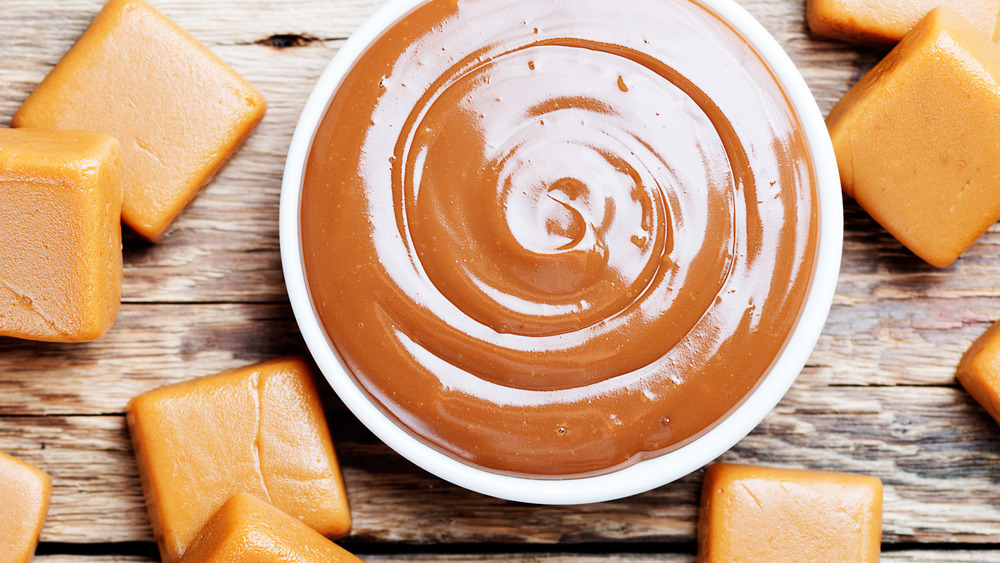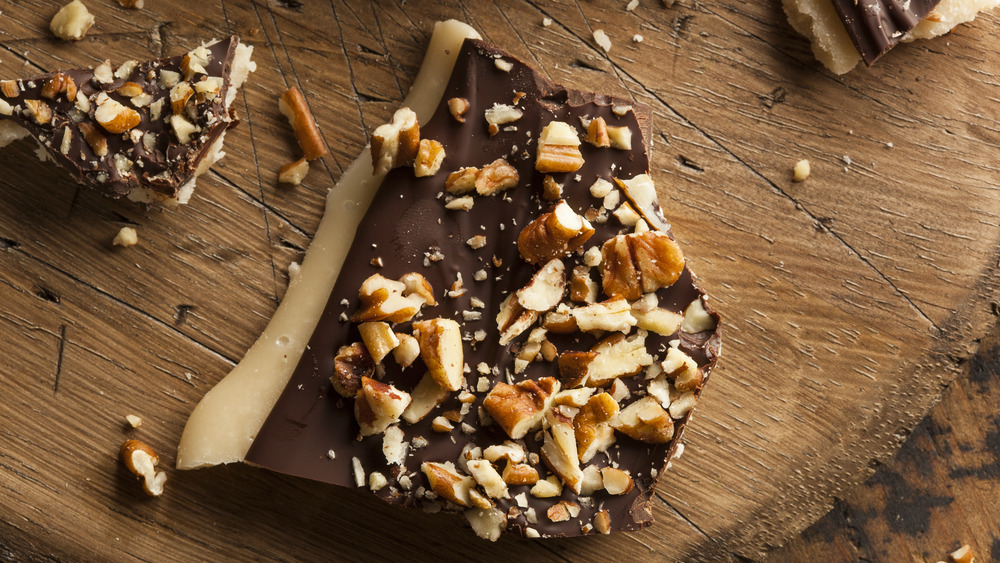This Is The Real Difference Between Toffee And Butterscotch
Toffee and butterscotch are two sticky and sweet confections widely loved by dessert enthusiasts around the world. Like their cousin caramel, both have a chewy, sticky texture and a salty-sweet flavor that add pizzazz to candies and baked goods, like cookies, brownies, and cakes. They also make for delectable ice cream sundae toppings! These light brown-colored sweets may be closely related in the culinary world, but there are some key differences between the two.
Starting with their similarities, you'll find that the primary ingredients of both toffee and butterscotch are brown sugar and butter. Vanilla, flour, salt, and nuts are also occasionally incorporated into the mix, depending on the candy maker's preferences.
Toffee is believed to have originated in early 19th century England, according to Woody Candy Company. In fact, the Oxford English Dictionary first listed and defined the word "toffee" in 1825. Sweet! So, where does the term butterscotch come from? According to Mental Floss, the term "scotch" has nothing to do with alcohol, but rather the unique cutting method. Since hard candy can be a bit tricky to break, it's "scotched," or scored, to make it easier to cut into pieces. It all boils down to not just the ingredients from which they're made, but how long it takes to make them.
How long does it take to make butterscotch vs toffee?
Like butterscotch, toffee is made with brown sugar and butter. However, toffee is cooked longer than butterscotch to reach the ideal consistency and taste.
According to Taste of Home, traditional butterscotch is created by melting butter with brown sugar. Then, once the concoction becomes a smooth liquid, heavy whipping cream can be added to the mix for a milky finish. The ingredients are boiled until the butterscotch reaches the optimal temperature. Simply Recipes recommends the temperature be just around 225 degrees Fahrenheit. (Tip: Use a candy thermometer to make sure!)
For toffee, the temperature of the candy mixture should reach 300 degrees Fahrenheit, says Food. It should then cool until it becomes brittle — usually to the point of cracking or shattering. When it comes to texture, this is largely a major difference between the two.
Do the two have a truly different mouthfeel? The short answer is yes. According to a WebstaurantStore blog post, butterscotch is cooked until it just softly cracks on the surface, whereas the mixture is considered toffee when the butter and brown sugar mixture fully cracks. When it comes to consistency and texture, butterscotch tends to be chewy and flexible, whereas toffee is crunchy and fragile.

